#puppybehavior
Explore tagged Tumblr posts
Text
How to Stop Your Dog from Pulling on the Leash: Tips from Zak George’s Dog Training Revolution
Is your dog constantly pulling on the leash during walks? You’re not alone! Leash pulling is a common issue many dog owners face, and it can turn a pleasant stroll into a frustrating experience. Fortunately, renowned dog trainer Zak George offers practical solutions to help your dog walk politely on a leash. In his video, "Stop Leash Pulling," Zak breaks down effective techniques that use positive reinforcement to make walks enjoyable for both you and your dog.
Why Do Dogs Pull on the Leash?
Before diving into the training techniques, it’s essential to understand why dogs pull on the leash in the first place. Dogs naturally walk faster than humans, and they’re often excited to explore the world around them. The more they pull, the quicker they get to sniff and explore new scents, which inadvertently reinforces the behavior. To change this, Zak emphasizes the importance of teaching your dog that walking nicely beside you is far more rewarding than pulling ahead.
Step-by-Step Guide to Stop Leash Pulling
Zak George’s approach revolves around teaching your dog to stay close to you while making walks engaging and fun. Here are the steps he outlines in his video:
1. Use High-Value Treats
Zak recommends using high-value treats that your dog loves. These treats serve as a powerful motivator and a way to reward good behavior. Make sure the treats are small, easy to eat, and only given during training sessions. The goal is to create a positive association between walking by your side and receiving a reward.
2. Start Training Indoors or in a Low-Distraction Environment
Begin by practicing leash training indoors or in a quiet area with minimal distractions. This allows your dog to focus on you and the training without getting overwhelmed by the sights and sounds of the outside world.
3. Reward When Your Dog Walks Beside You
Hold a treat by your side and let your dog sniff it. Start walking, and if your dog stays by your side without pulling, immediately reward them with the treat and praise. This reinforces the behavior of walking close to you.
4. Use a Marker Word or Clicker
Zak emphasizes the importance of using a marker word like "Yes!" or a clicker to signal to your dog that they’re doing the right thing. The marker word or clicker helps your dog understand that they will be rewarded for the desired behavior, creating a positive reinforcement loop.
5. Change Directions When Your Dog Pulls
If your dog starts to pull, Zak suggests changing directions abruptly and calling your dog to follow you. This technique teaches your dog that pulling doesn’t lead them where they want to go and that staying close to you is more rewarding. Repeat this exercise several times until your dog starts paying more attention to your movements.
6. Practice with Patience and Consistency
Consistency is key to any training, and leash training is no exception. Practice these exercises regularly, keeping training sessions short and positive. Over time, your dog will learn that pulling is not rewarded and that staying by your side leads to treats and praise.
Tools Zak Recommends
Zak advises against using tools like choke collars, prong collars, or retractable leashes, as they can cause physical harm and anxiety in dogs. Instead, he suggests using a standard 4-6 foot leash and a comfortable harness that doesn’t put pressure on the dog’s neck.
Understanding Your Dog’s Needs
Remember that training isn’t just about discipline; it’s about understanding your dog’s needs and motivations. Dogs are naturally curious and energetic, and they require both mental and physical stimulation. Zak recommends incorporating sniffing breaks and playtime during walks to keep your dog engaged and satisfied.
Celebrate Small Wins
Training takes time, and it’s important to celebrate small successes. If your dog manages to walk a short distance without pulling, that’s progress! Gradually increase the distance as your dog becomes more comfortable with the new walking routine.
Final Thoughts
Zak George’s training philosophy focuses on creating a positive, trust-based relationship between you and your dog. By using positive reinforcement, patience, and consistency, you can transform your dog’s leash-pulling habit into a pleasant walking experience.
So, the next time you grab the leash for a walk, remember Zak's tips and turn your stroll into a fun and rewarding bonding session with your furry friend!
Check out the full video for more in-depth training techniques: Stop Leash Pulling by Zak George’s Dog Training Revolution.
youtube
#DogTraining#LeashTraining#StopLeashPulling#ZakGeorge#PositiveReinforcement#DogBehavior#DogWalkingTips#TrainYourDog#DogObedience#PetTraining#DogLovers#PuppyTraining#DogOwnerTips#DogTrainingAdvice#LooseLeashWalking#DogWalking#DogCare#DogLife#HappyDog#DogTrainer#CanineTraining#PetParenting#DogTrainingJourney#DogWalkingProblems#PuppyBehavior#GoodDog#TrainingTips#DogTips#DogWalkingHacks#PetLovers
0 notes
Link
#AdolescentPuppyTraining#behavioraltraining#CrateTraining#DogObedience#Dogtraining#HouseTrainingPuppies#Is16WeeksTooOldtoTrainaPuppy#obediencetraining#positivereinforcement#PuppyBehavior#PuppyDevelopmentalStages#PuppyLearningAbilities#Puppytraining#Puppytrainingchallenges#SocializationinPuppies#TrainingMethodsforPuppies
0 notes
Link
#caninecompanionship#dogbreeds#dogtraining#labradorpuppy#labradorretriever#newpuppy#petadoption#puppybehavior#puppycare#puppydevelopment
0 notes
Text
How To Train Your Puppy Review: Your Ultimate Guide to a Well-Behaved Canine Companion
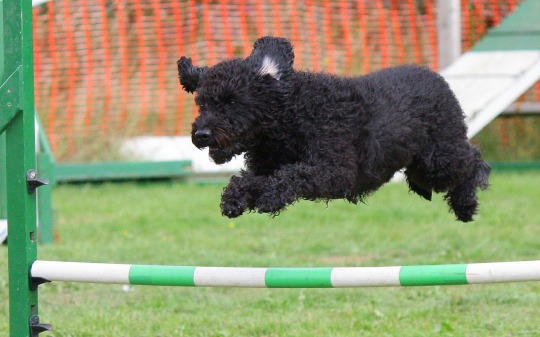
In this How To Train Your Puppy review, we'll embark on a journey to discover an exceptional puppy training program that can transform your furry friend into a well-behaved and obedient companion. Training your puppy is a pivotal step in building a strong, loving bond with your pet. With the plethora of training options available, finding the right one can be overwhelming. Let's dive into the world of "How To Train Your Puppy" and explore its remarkable features, benefits, and potential drawbacks while ensuring your pup's happiness and your peace of mind.
Chapter 1: Unveiling "How To Train Your Puppy"
"How To Train Your Puppy" is a highly acclaimed online dog training program designed to guide dog owners in nurturing disciplined, well-mannered puppies. This comprehensive program is suitable for puppies of all breeds and ages, offering a systematic approach to puppy training that covers everything from basic commands to addressing common behavioral challenges.
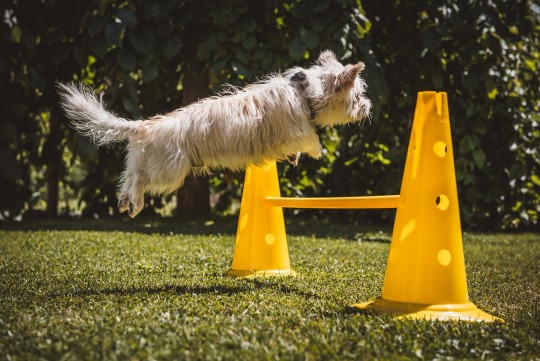
Chapter 2: The Vital Role of Puppy Training
Before we delve into the specifics of "How To Train Your Puppy," let's underscore the importance of puppy training. Proper training lays the foundation for your puppy's development and well-being, benefiting both you and your furry family member in numerous ways:
Behavioral Development: Training sets the stage for your puppy's behavioral growth, preventing unwanted behaviors down the line.
Communication: Effective training establishes clear communication between you and your pup, ensuring they understand your expectations.
Safety: A well-trained puppy is less likely to engage in risky behaviors, making your home and outdoor adventures safer for all.
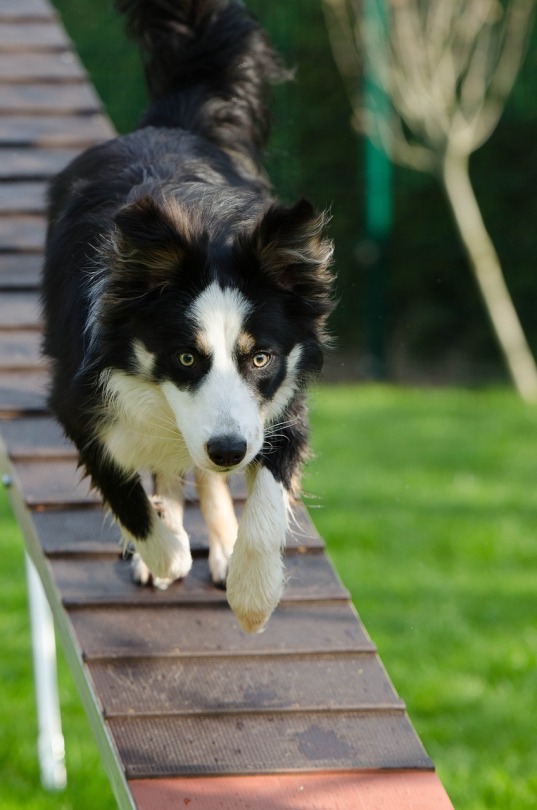
-----------------------------
✔️Click Here To Visit - OFFICIAL WEBSITE✔️
✔️Click Here To Visit - OFFICIAL WEBSITE✔️
✔️Click Here To Visit - OFFICIAL WEBSITE✔️
-----------------------------
Chapter 3: The Exceptional Features of "How To Train Your Puppy"
Now, let's explore the unique features that make "How To Train Your Puppy" an outstanding training program:
Comprehensive Training Modules: This program breaks down training into easy-to-follow modules that encompass vital aspects of puppy development, including basic commands, housebreaking, leash training, and socialization.
Video Demonstrations: Each training module includes video demonstrations that allow you to witness these techniques in action, making it simpler for you to understand and replicate.
Detailed Written Guides: Alongside the videos, you'll find comprehensive written guides that provide in-depth explanations of training methods, ensuring you grasp the theory behind the techniques.
Customizable Training Plans: "How To Train Your Puppy" grants you flexibility by enabling you to create personalized training plans tailored to your puppy's unique needs and your busy schedule.
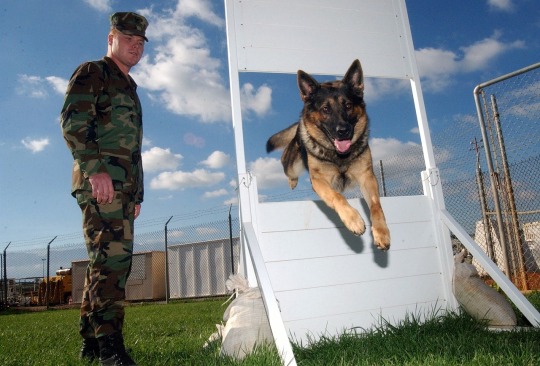
Chapter 4: The Alluring Benefits of "How To Train Your Puppy"
Now, let's discover the myriad benefits of choosing "How To Train Your Puppy" as your go-to training program:
Effective Training Techniques: This program employs positive reinforcement methods, which have a proven track record in training puppies without resorting to harsh or negative tactics.
Convenient Online Access: As an online program, "How To Train Your Puppy" offers the convenience of accessing training materials at your own pace, seamlessly fitting into your daily routine.
Lifetime Access: Upon purchasing the program, you gain lifetime access to the training materials, ensuring you can revisit and reinforce training whenever necessary.
Universal Applicability: "How To Train Your Puppy" is designed to cater to all breeds, accommodating small toy breeds as well as large working breeds.
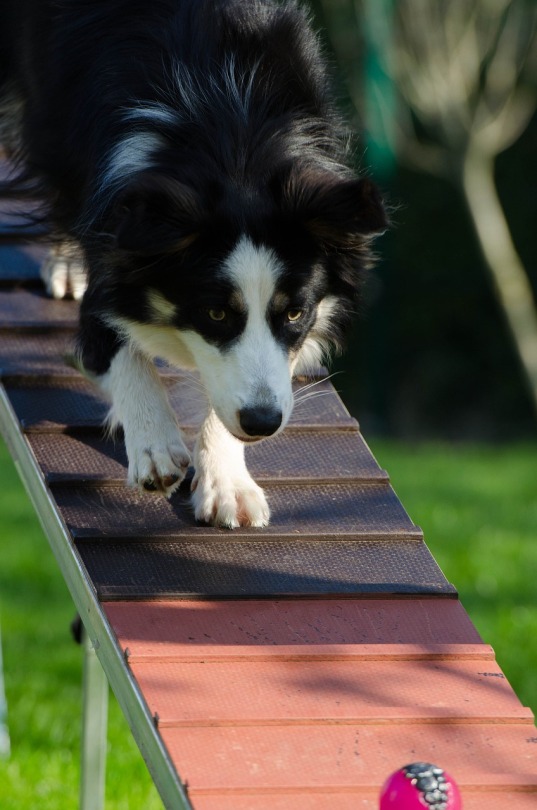
Chapter 5: Addressing Potential Concerns with "How To Train Your Puppy"
While "How To Train Your Puppy" offers numerous advantages, it's essential to consider potential concerns as well:
Online-Only Access: Some individuals may prefer in-person training sessions or classes, which provide direct interaction with trainers.
Self-Directed Training: Success with this program hinges on your commitment and consistency. Staying disciplined throughout the training process may pose a challenge for some dog owners.
Not an Instant Solution: It's important to recognize that no training program can guarantee instant results. Achieving success requires patience and unwavering dedication.

Chapter 6: Real Stories of Success
To offer you a well-rounded perspective, let's delve into real user experiences with "How To Train Your Puppy." Online forums and social media groups are filled with positive stories of improved behavior and strengthened bonds between owners and their puppies. Individual results may vary based on your pup's temperament and your commitment to the training process.

Chapter 7: Conclusion and Your Next Step
In conclusion, "How To Train Your Puppy" emerges as a comprehensive and accessible training program for nurturing well-behaved and obedient puppies. Its positive reinforcement techniques, flexible training plans, and online accessibility make it an appealing choice for many dog owners.
Now, if you're ready to embark on this incredible journey of training and bonding with your puppy, I invite you to explore "How To Train Your Puppy" by following this Website. Your decision to invest in this program can lead to a harmonious, joyful relationship with your furry friend.
Remember that effective puppy training requires dedication, patience, and consistency, regardless of the program you choose. Your puppy's happiness and your peace of mind are worth every effort you put into their training journey.
✔️Click Here To Visit - OFFICIAL WEBSITE✔️
✔️Click Here To Visit - OFFICIAL WEBSITE✔️
✔️Click Here To Visit - OFFICIAL WEBSITE✔️

-----------------------------
✔️Click Here To Visit - OFFICIAL WEBSITE✔️
✔️Click Here To Visit - OFFICIAL WEBSITE✔️
✔️Click Here To Visit - OFFICIAL WEBSITE✔️
#PuppyTraining#DogTraining#HowToTrainYourPuppy#PuppyBehavior#PetTraining#PuppyLove#DogOwners#PositiveReinforcement#OnlineTraining#PuppyTips#WellBehavedPuppy#ObedienceTraining#PetCare#FurryFriend#PuppyBonding#TrainingProgram#PetLovers#PuppyReview#PuppyGuide#DogBehavior#OnlineProgram#PuppyTrainingJourney#HappyPuppy
1 note
·
View note
Video
youtube
In this video, we'll be sharing valuable insights and practical tips for training a new puppy. Join us as we guide you through the essential steps to start your puppy's journey on the right paw. From basic commands to housebreaking and socialization, we'll cover it all. Visit https://factober.com for such amazing content. Experience the joy of raising a well-trained puppy with our comprehensive puppy training tips. From essential techniques for beginners to step-by-step guidance in training a new puppy, we've got you covered. Discover how to teach your puppy basic commands and more, while building a strong bond through obedience training. Learn effective tips for housebreaking success and ensuring your puppy's socialization for a thriving life. Explore expert advice on puppy care, health, and happiness. Join us on this exciting journey of training your new puppy with confidence. #PuppyTrainingTips #NewPuppyCare #TrainYourPuppy #PuppyObedience #HousebreakingTips #PuppySocialization #PuppyTricks #PetTraining #DogTrainingTips #CutePuppies #PuppyTraining #PuppyTips #DogTraining #PetTraining #PuppyLove #NewPuppy #PuppyLife #PuppyJourney #PuppyOwner #PuppyCare #PuppyBehavior #PuppyObedience
0 notes
Text
How to Teach a Puppy not to bite you ?
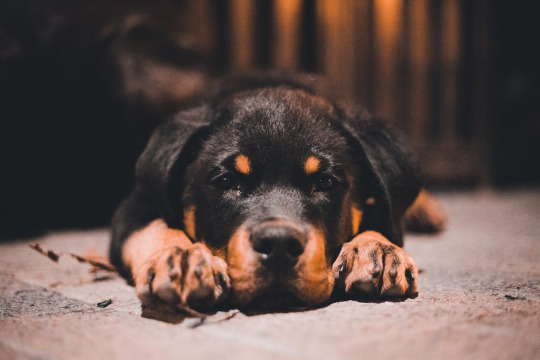
While biting can be a normal tendency for young dogs, teaching a puppy not to bite is an essential aspect of their training. You can use the following procedures to train your dog not to bite you:
>>> How to stop puppy biting hands and feet >>> what can i do to stop my puppy from biting
Socialize your puppy: Your puppy has to be socialized in order to learn how to interact with humans and other dogs. They will get playing skills by doing this without biting excessively.
>>> puppy training chewing and biting >>> How to stop puppy chews on everything
When your puppy bites you, use the stern "no" command to make them understand that what they are doing is unacceptable. Avoid yelling at them or hitting them; doing so could backfire.
>>> training puppy not to chew >>> how to stop dog from nipping
Redirect their biting: If your puppy bites you, have them focus on a ball or a chew toy. They will learn what is appropriate to chew on thanks to this.
>>> Your Dog is pulling on the leash >>> You feel helpless to control your dog
Praise positive behavior by giving your puppy praise, treats, or both whenever they engage in playtime without biting or when they turn their attention to a toy that is acceptable. They will be able to connect good behavior with rewards as a result.
>>> Your Dog gets over excited and is hard to settle down >>> Your Dog is Jumping up
Be dependable: The key to training your puppy is consistency. To train your puppy not to bite, make sure everyone in your home follows the same commands and techniques.
>>> You feel helpless to control your dog >>> Your Dog is whining constantly
Prevent physical play: Games involving wrestling or tug-of-war might encourage biting behavior in puppies.
>>> You want a dog who obeys you >>> You want a better bond with your dog
Spray a bitter substance on your hands or on anything that your puppy likes to gnaw on. They won't bite or chew because of the unpleasant flavor.
>>> You're frustrated with your dog >>> When you tell your Dog ‘no’ with no success
Remember that it takes time and patience to train your dog not to bite. You may teach your puppy what conduct is appropriate and what is not through continuous training and positive reinforcement.
#puppytraining#bitingpuppy#puppybiting#puppybehavior#puppytrainingtips#puppytraining101#dogtraining#dogobedience#trainyourpuppy#stopbiting#puppylove#cutepuppies#dogbehavior
1 note
·
View note
Text
1 Year Old German Shepherd Behavior

We always want our dogs to be happy and healthy. German Shepherds are wonderful dogs. We wouldn't want anything to affect them negatively while growing up, so here is an article to explain common 1 year old German Shepherd behavior. If you have noticed any drastic differences then you may want to contact a vet, just to make sure everything is alright!
Overall Behavior:
German shepherds are loyal caring dogs and overall 1 year old German Shepherd behavior can vary. By this age they have probably formed a stronger bond with you. Doesn't mean they won't misbehave at times, as they are maturing out of their puppy stage around now. So don't be mad if your German shepherd acts a little destructive still. Just means you need to keep up with their basic training. Try to spot out any aggression in your German Shepherd. While German Shepherds are mostly friendly sweet dogs, they can have a strong intolerance to strangers. Make sure that your German Shepherd is very well socialized with everyone in your household, especially children and small pets. Your German Shepherd should definitely be out of their teething stage by the age one. No worrying about your puppy chewing up your furniture and other belongings. By this age you want to make sure your German Shepherd respects you. This is very important, so if your Shepherd ever nips or bites at you not playing, you need to make sure to let them know that's not okay. Just tell them "off" and give them a little pat on the nuzzle, letting them know what they did with their mouth was wrong. Continue this if they do it a few more times. If they keep it up and it's a natural habit think about contacting a trainer.
Nutrition:
German Shepherds are very athletic energetic dogs. They need to have a strong diet. We have an article called "What Can German Shepherds Eat?" You can check it out to see what foods are best and to help you watch out for those toxic foods too. Make sure they are eating regularly. It's good to know a German Shepherds average weight. Males range 65-90 pounds. While females are about 50-70 pounds. Try to not go under or over the average weights. Make sure there is no lack of appetite or excessive eating. It's best to schedule meals to keep them healthy. Two or three times is a day is a good way to spread it out. Just make sure your dog isn't going without eating for 12 hours. This can cause nausea. The amount you feed your Shepherd a day should be based on the weight, age, and activity level of your dog. The average amount of food a day for the German Shepherd is five to eight cups. So you can half this and give them however much that is in two meals. Since you don't want them going over 12 hours without eating I would give them one meal at around 10am and the next at around 8pm.
Health:
Your dog is still maturing and growing. You will want to take a trip to the vet for their yearly checkup, just to get everything checked out. Dogs need checkups at least once a year. Watch out for any health problems that could be severe. If you have spotted any of these in your German Shepherd definitely visit your local vet: - Vomiting - Change in personality - Unexplained Weight Loss - Loss of appetite - Excessive gagging, sneezing, or coughing - Diarrhea - Excessive thirst or urination - Red or swollen gums - Difficulty urinating - Runny eyes or nose - Change in sleeping patterns - Labored Breathing - Dry itchy skin These are common signs of your dog being sick. This can be minor or serious. That's why you must contact a vet so it doesn't get worse. Now here is a list of common health problems in one year old German Shepherds. You don't have to worry about major diseases and dysfunctions in the body, as those normally start at around 5-6 years old. - Ear Infection - Heartworm - Kennel cough - Influenza - Lyme Disease - Fleas or ticks You can prevent these, as I stated earlier, by getting your check ups regularly. Read this article to learn how often to take your dog to the vet. If your dog does get one of these problems not to worry. These are small and minor. They can be cured with prescribed medicine or other things that help prevent it. Like for fleas and ticks they have collars, and for heartworm they have treats.
In Closing:
Overall your German Shepherd dog should be growing up healthy and strong. They should have a loyal and fun, yet alert personality. Keep up with training and just know that your dog may still not be completely out of the puppy stages. It depends on the dog, different dogs mature at different rates. So I wish you the best of luck! Read the full article
0 notes
Photo

...and not only for herding dogs, mark that. Herding training can help any dog with behaviors that we don't like. For REAL insight into dog training however this is where one must start: https://mygermanshepherd.org/how-to-train-your-dog/ (psst! better than a Pro! ;-) #dogtraining #puppytraining #dogbehavior #puppybehavior
0 notes
Text

Courses Avail Online
1. The Science of Animal Behavior: Dog Behavior & Training Course - Coursera
Description: This course, offered by the University of Edinburgh, covers the science behind animal behavior with a focus on dog behavior and training techniques. It provides a comprehensive understanding of canine psychology, how dogs learn, and how to manage common behavioral issues.
Format: Online, self-paced
Duration: Approximately 7 weeks
Cost: Free to audit; certificate available for a fee
Link: Coursera - The Science of Animal Behavior
2. Dog Emotion and Cognition - Coursera
Description: Offered by Duke University and taught by Dr. Brian Hare, a leading expert in dog cognition, this course dives into how dogs think, how they learn, and how they solve problems. It’s an excellent choice for anyone looking to understand dog behavior on a deeper level.
Format: Online, self-paced
Duration: Approximately 8 hours
Cost: Free to audit; certificate available for a fee
Link: Coursera - Dog Emotion and Cognition
3. Victoria Stilwell Academy for Dog Training & Behavior - Foundations Course
Description: This course by celebrity dog trainer Victoria Stilwell is ideal for beginners who want to learn the basics of positive reinforcement training. It covers canine communication, learning theory, and basic obedience training.
Format: Online, with video lessons and interactive assignments
Duration: Self-paced, typically completed in a few weeks
Cost: Paid
Link: Victoria Stilwell Academy
4. Karen Pryor Academy Dog Trainer Foundations Course
Description: This introductory course focuses on positive reinforcement and clicker training. It’s designed for both beginners and those looking to refine their dog training skills. The course covers foundational training techniques, behavior analysis, and training exercises.
Format: Online, self-paced
Duration: Typically 6 weeks
Cost: Paid
Link: Karen Pryor Academy
5. Udemy Courses on Dog Behavior and Training
Description: Udemy offers a variety of dog behavior and training courses, ranging from beginner to advanced levels. Topics include understanding dog psychology, solving behavioral problems, and advanced obedience training. The platform frequently offers discounts on courses.
Format: Online, video-based
Duration: Varies by course
Cost: Typically between $10 to $50, depending on discounts
Link: Udemy Dog Behavior and Training Courses
6. International Association of Canine Professionals (IACP) Dog Trainer Certification Program
Description: For those interested in professional certification, IACP offers a comprehensive program covering canine behavior, training techniques, and ethics. It’s ideal for anyone looking to become a certified dog trainer.
Format: Online with some in-person components
Duration: Varies
Cost: Paid (varies by level)
Link: IACP Dog Trainer Certification
#DogTraining#DogBehavior#DogCourses#PetTraining#DogLovers#CanineTraining#PositiveReinforcement#DogTrainingTips#PuppyTraining#DogObedience#DogPsychology#DogTrainer#LearnDogTraining#PetBehavior#TrainingYourDog#DogTrainingCourse#OnlineDogTraining#DogBehaviorist#ObedienceTraining#PuppyBehavior#CanineLearning#DogCare#PetOwnerEducation#TrainingDogs#DogLife#HappyPups#DogLoversCommunity#ProfessionalDogTrainer#TrainYourDog
0 notes
Link
#PlaydatePreparation#PuppyBehavior#Puppycomfort#PuppyEtiquette#puppyexercise#puppyhealth#PuppyInteraction#PuppyIntroduction#PuppyPlayActivities#PuppyPlayArea#Puppysafety#puppysocialization#PuppySupervision#PuppyToys#SuccessfulPuppyPlaydate
0 notes
Photo

I promise to be good!!!! #baddog #puppybehavior #imapoodle #poodlesofinstagram #minipoodle #dogwithcurlyhair #poodles #mood #Fall
0 notes
Photo

#tugtime for #puppies at #smartypup_sf Notice all the people sitting on the floor? Why? It’s really important that puppies know you have their tail (back). Giving your puppy a safe place, your lap and humans in general as a #safeplace is not reinforcing fear. Want to hear more about this issue? Let us know.😇 #puppybehavior #puppysocialskills (at SmartyPup!) https://www.instagram.com/p/CNtumNqBPJY/?igshid=feyxz098h9l8
0 notes
Photo

How to Use Bad Dog Behavior to Teach GOOD Dog Behavior! http://ehelpdesk.tk/wp-content/uploads/2020/02/logo-header.png [ad_1] To learn more go to... https://w... #acrylicpainting #animalbehavior #animaltraining #baddogbehaviors #behavioroncue #breadbaking #coloredpencildrawing #dogbehavior #dogtraining #drawing #dunbaracademy #eft #figuredrawing #howtostopabarkingdog #iandunbar #jamiedunbar #lifestyle #lurerewarddogtraining #neuro-linguisticprogramming #oilpainting #painting #pencildrawing #portraiture #positivereinforcement #positivereinforcementdogtraining #procreatedigitalillustrationapp #puppybehavior #puppytraining #sketching #soapmaking #sourdoughbreadbaking #watercolorpainting
0 notes
Video
Coolest puppy ever #BSD👑 #PrincessBeauty👑 #puppylove #shenotshy #puppyparent #puppybehavior
0 notes